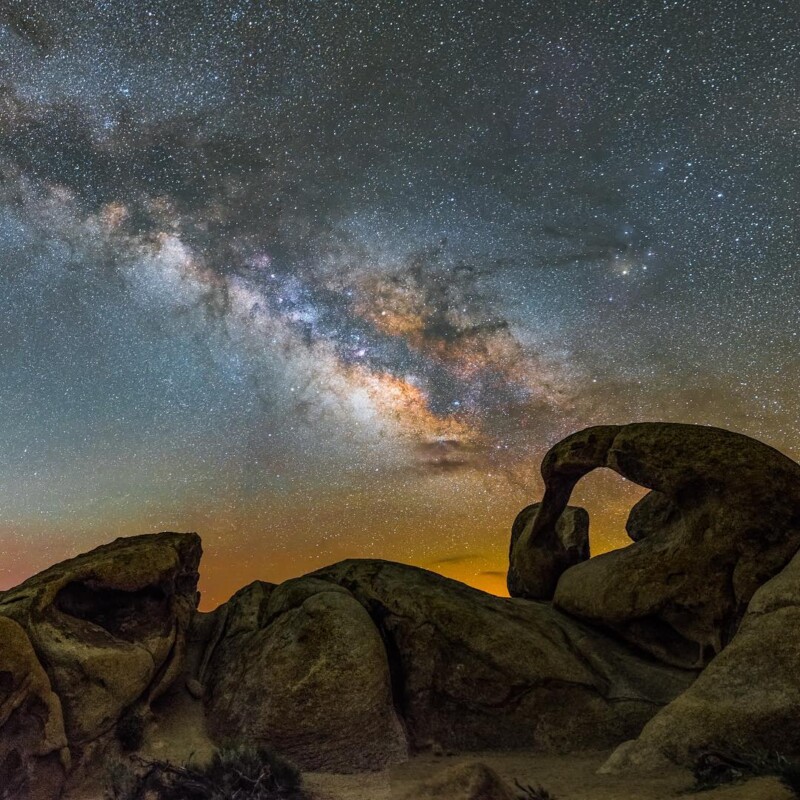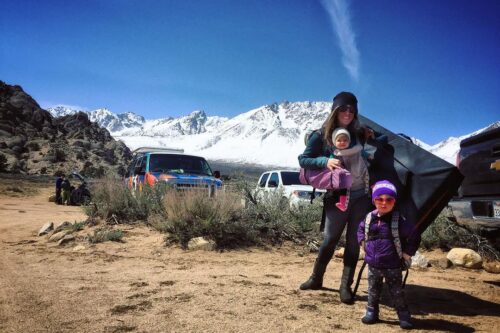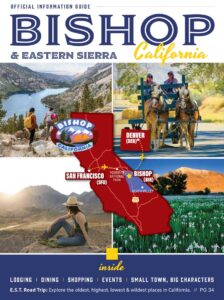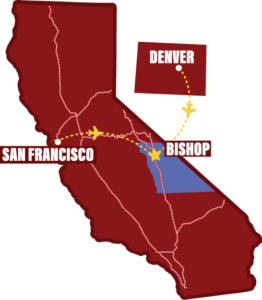Stargazing in the Eastern Sierra

Did you know that there are countless children and adults who have never seen the Milky Way? Experts say that 80% of North Americans and one-third of humanity can no longer see the Milky Way from where they live due to light pollution. We believe everyone should have the opportunity to see, at least once in a lifetime, the amazing spectacle of the Milky Way and an intensely sparkling, starry night sky.
The heart of the Eastern Sierra is perfectly situated for a brilliant night sky experience.
The Eastern Sierra still has incredibly dark, clear skies and the lack of light pollution in the Owens Valley is largely due to the fact that it is one the least populated regions in the country. Situated on the eastern side of the Sierra Nevada, the Owens Valley is in the ‘rain shadow’ of this magnificent mountain range. Weather statistics show that the region has a 92% chance of clear weather, resulting in about 335 clear nights a year. Within the valley, and higher up in the mountains on either side, are many easily accessible places where night sky viewing is exceptional. And, what makes these stargazing settings even more special, is that they have spectacular natural beauty of their own.
Night sky viewing is a year-round activity in the Owens Valley and should be coordinated primarily with moon phases, the seasons, timing of astronomical events, and the weather. On a cloudless, new moon night (when the moon is not illuminated by the sun) the stars will shine brightest for the longest period of time. Cold, clear winter nights present optimal conditions for night sky viewing, however, some high elevation destinations are not accessible during mid-winter. Summer months offer warm, dry nights that make this a perfect time for teaching kids about the cosmos. From late summer to early fall is the best time of the year to see the Milky Way. The brightest portion of this ribbon of stars arcs almost directly overhead from the southwest to the northeast parts of the sky.
Astronomy can be a fun and rewarding activity for the whole family. It’s as easy as looking up at the stars. A new smart phone is a great way to capture some simple snapshots of the night sky and there are many excellent star apps that can provide maps, charts, and information on what you will see in the sky. A good paper star chart would also be worth including in your astronomy kit.
Our guide includes an interactive map of stargazing hotspots along US Highway 395 from Lone Pine, 60 miles south of Bishop, to Mono Lake, 66 miles north of Bishop. There are innumerable places to stop, hike, bivvy for a few hours, or camp overnight for stargazing. Follow the stars on the map to see the descriptions and locations of these great stargazing places.
In addition to seeing the stars in the sky, visitors can tour a state-of-the-art radio telescope array. The Owens Valley Radio Observatory (OVRO), run by the California Institute of Technology (Caltech), is one of the largest university-operated observatories in the world and hosts numerous projects in radio astronomy and cosmology. It was brought into operation in 1958 with one 32-ft radio telescope. Today, the scope of the operation is extensive and world-class. OVRO now has the capability to ‘listen’ and analyze data using multiple different types of radio telescope technologies. Plan your stargazing experience to include a tour of this fascinating facility.
For more detailed information on local weather, as well as other things to do and see in and around Bishop, call the Bishop Visitor Center at (760) 873-8405. Our friendly, knowledgeable staff can help you plan your trip to get the best possible experience.



